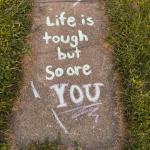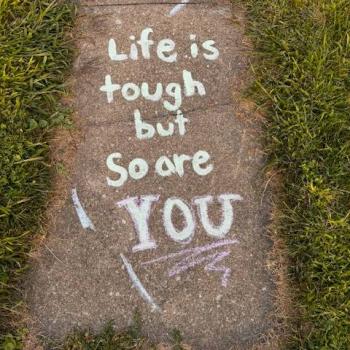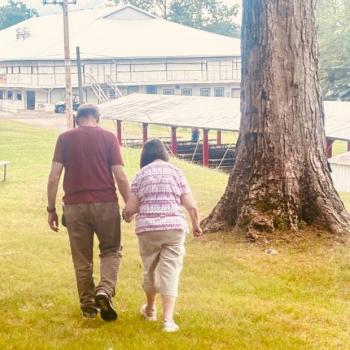We live in a period of time of great polarity. In America anyway, you are either left or right and both point to each other as wrong. The reality, they are part of the same bird.
Instances of extreme human suffering—such as malnutrition, urban destruction, and concentration camps—are widely reported in contemporary media. Public discourse has increasingly referenced concepts like “toxic empathy,” suggesting a need to examine our collective capacity for compassion. In response to these challenging circumstances, it is imperative to consider how spiritual approaches to attachment and detachment can support the restoration of our shared humanity.
During these periods marked by division and adversity, individuals naturally turn to their foundational beliefs and traditions for guidance. Spiritual practices that address attachment—the emotional connection to people and outcomes—and detachment—the ability to practice compassion without emotional exhaustion—offer valuable frameworks for navigating such uncertainty.
For those who value faith across diverse contexts, maintaining a commitment to discerning truth remains essential. This prompts a critical inquiry into the nature of truth itself. In my second discussion this week, I will analyze the principles of attachment and detachment, alongside relevant spiritual practices, to provide insight applicable to current social challenges.
Exploring Spiritual Practices for a Divided World
Throughout my career working with individuals, I have observed significant changes in societal attitudes and behaviors. In a recent conversation with my brother-in-law regarding the military, we reflected on how, during my service, displays of nationalism and strong advocacy for gun rights were not as prevalent as they seem today. Currently, I am reading The Anxious Generation by Jonathan Haidt, which echoes trends I have noticed over the past three decades: there appears to be an increase in anxiety and depression, accompanied by reduced resilience among people. Haidt and other scholars attribute many of these mental and behavioral health challenges to the growing reliance on digital forms of entertainment, communication and connection.
As society becomes more digitally connected, physical interaction has decreased, leading to a diminished influence of traditionally important institutions such as churches, schools, and families in fostering shared values and social cohesion.
In light of these transformations, we are prompted to reconsider the foundations upon which our empathy is built and how it manifests in a landscape saturated with complex challenges and polarized narratives. The proliferation of media coverage detailing global injustice and suffering can threaten to overwhelm our sense of compassion, sometimes resulting in emotional exhaustion or withdrawal. It is here, in the work of mindfulness that we can explore the interplay between attachment and detachment as a spiritual practice. By drawing upon spiritual wisdom, we can reframe our engagement with the world—not to escape its pain, but to approach it with a compassion. In doing so, we cultivate a balance that allows us to remain present with suffering without being consumed by it. Accomplishing this, we can foster a deeper, more authentic connection to ourselves and to others as we seek ways to reclaim our shared humanity.
Attachment: The Power and Peril of Emotional Investment
Attachment plays a significant role in assessing an individual’s overall well-being. In the field of psychology, four primary attachment styles are identified: secure attachment, ambivalent attachment, avoidant detachment, and disordered attachment. From a spiritual perspective, reliance solely on a faith based upon external instruction—rather than an internalized belief system—may lead to spiritual instability during times of adversity, provoking questions such as, “How could God let this happen?” Conversely, individuals who have developed a secure attachment with their faith may demonstrate resilience and a greater sense of stability, even amidst challenges.
Moreover, secure attachment to primary caregivers and supportive environments is associated with increased motivation for justice, social connection, and engagement in activism. In contrast, exposure to unhealthy or dysfunctional systems often results in diminished motivation, heightened anxiety, and a tendency toward social withdrawal.
There are risks too with being too attached, one can experience emotional burnout, tribalism, overwhelming suffering. Recognizing these pitfalls, it becomes essential for one to explore how intentional detachment can serve as a safeguard against what we call in the field compassion fatigue.
Detachment: Compassion Without Overwhelm
I often tell my clients at some point during their first appointment with me that I love them deeply, but I don’t care. Here, while the words can be jarring, I am letting them know that I am an ally, that I can help them carry their burdens while they are with me and that I hold a grace-filled love for them. In these words, I set a boundary with my clients that sets up a certain amount of detachment from my clients’ suffering. This does not mean withdrawing from the urgency of suffering, but rather learning to hold space for pain without losing ourselves in it. By integrating spiritual insights from various traditions, we can distinguish between indifference and the kind of detachment that empowers us to remain open-hearted and steadfast, especially when faced with overwhelming circumstances. Such discernment invites us to engage with suffering wisely, cultivating resilience and a sustainable capacity for empathy that honors both our limits and our longing for connection.
When we consider the notion of detachment from other spiritual traditions such as Buddhism and Christianity, we find that we discern the difference between indifference and wise detachment. We cultivate a balanced approach that honors both empathy and boundaries. In doing so, we nurture a strength that allows us to return to service again and again, undiminished by the world’s turbulence.
Spiritual Practices to Cultivate Balance
Mindfulness, prayer and meditation have been key tools in my toolbox over the years to manage balance. The practice of being present is key to staying in tune with how a situation is making you feel. In therapy school, we learn a lot about a concept known as countertransferrence. Countertransferrence refers to the emotional reactions and feelings that a therapist experiences towards a client, often influenced by the therapist’s own past experiences or unresolved issues. While it can complicate the therapeutic relationship, it can also provide valuable insights if managed properly. If we do not learn how to detatch in a healthy manner, we can be sidelined by not only countertransfrrence but also burnout and other mental and behavioral health issues.
The world’s religions all recommend living “in the moment with full awareness. Zen Buddhism especially is known for its emphasis on “nowness.” Hindu, Taoist, Jewish, Moslem, Christian, and other teachers urge us to make the most of every day as an opportunity that will not come to us again.”
When we live in the moment, and see ourselves apart from the suffering from those around us and engage in healhty self care, we recharge our soul and our energy stores to help another day. Self care is a spiritual practice of you and a spiritual act.
Conclusion
To close this week’s discussion, in a world increasingly marked by division and suffering, reclaiming our humanity requires a mindful balance between attachment and detachment. Spiritual practices, from mindfulness and prayer to self-care, offer vital tools for fostering empathy while safeguarding our own well-being. By consciously engaging with both our connections and our boundaries, we can remain present to suffering without being overwhelmed, sustaining compassion and resilience as we navigate complex social challenges and seek to build a more caring, unified society.












